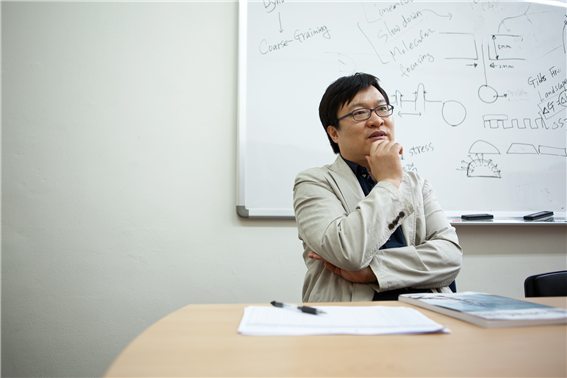- About Ajou
- Admission
- Academics
- Research
-
International
International
- Campus Life
-
News and Event
News and Event
-
AUT
AUT
Ajou News
NEW (2016-02-18) Ajou's team led by Professor Ju Min Kim develops an analysis device that prevents molecular damage
- 2016-03-02
- 22924

Ajou's team led by Professor Ju Min Kim develops an analysis device that prevents molecular damage
2016-02-18
An Ajou University team led by Professor Ju Min Kim (Department of Chemical Engineering, Graduate School's Department of Energy System Research) developed technology that can considerably improve the performance of animal cell culturing devices, which produce proteins, antibodies, or hormones, etc.
Professor Kim said he teamed up with Professor Wook Ryol Hwang (School of Mechanical Engineering, Gyeongsang National University) to develop a fluidic device that can precisely adjust the size of gaseous bubbles formed within animal cell culturing devices. Yeong Bok Bae of Ajou's Graduate School participated in the research as the first author, and Professor Gwang Lee from Ajou's School of Medicine joined as a collaborator. Their findings were published as the cover paper in the first 2016 issue of The Lab on a Chip, a world-class academic journal published by the U.K.'s Royal Society of Chemistry.
In order to raise the productivity of animal cell culturing devices, it is critical to create conditions that prevent molecular damage. It has been known that molecular damage is mainly caused by the stress generated from bursting oxygen bubbles that must be supplied in culturing cells.
Professor Kim's team developed a molecular damage measuring device and an air bubble control device that work within molecular culturing equipment, along with a microfluidic mixer that can adjust the liquid flow. He then applied the devices to cell culturing equipment.
Professor Kim said, "Cell culturing requires a steady supply of plenty of oxygen bubbles to the animal culturing equipment," adding, "However, intense stress occurs due to the bursting of oxygen bubbles when their diameters reach 5mm or less."
Professor Kim went on to say, "In the research, we succeeded in identifying the maximum size of gaseous bubbles that do not cause molecular damage by measuring the critical stress of molecular damage. The finding will contribute to reducing molecular damage."
If the efficiency of this technology improves further, it is expected to greatly contribute to enhancing the productivity of various medical products including artificial hearts.
The research was conducted with the support of the General Researcher Support Project and the Research Findings Commercialization Support Project by the Ministry of Science, ICT, and Future Planning.

<그림>
기포: Gaseous bubbles
기계적 세포 손상: Mechanical molecular damage
배출구: Outlet
유입구: Inlet
슬라이드 글래스: Slide glass
